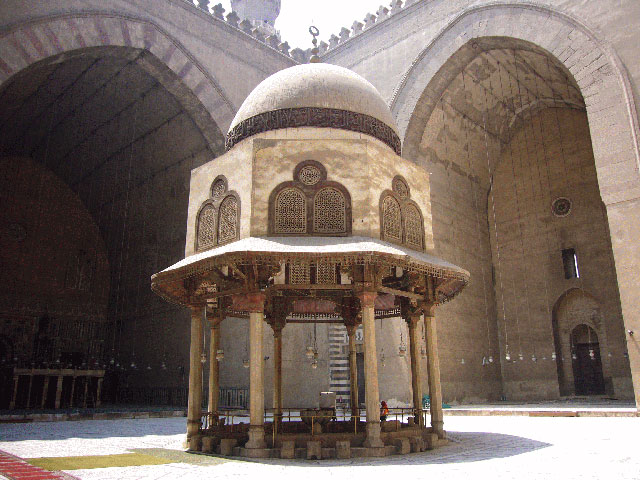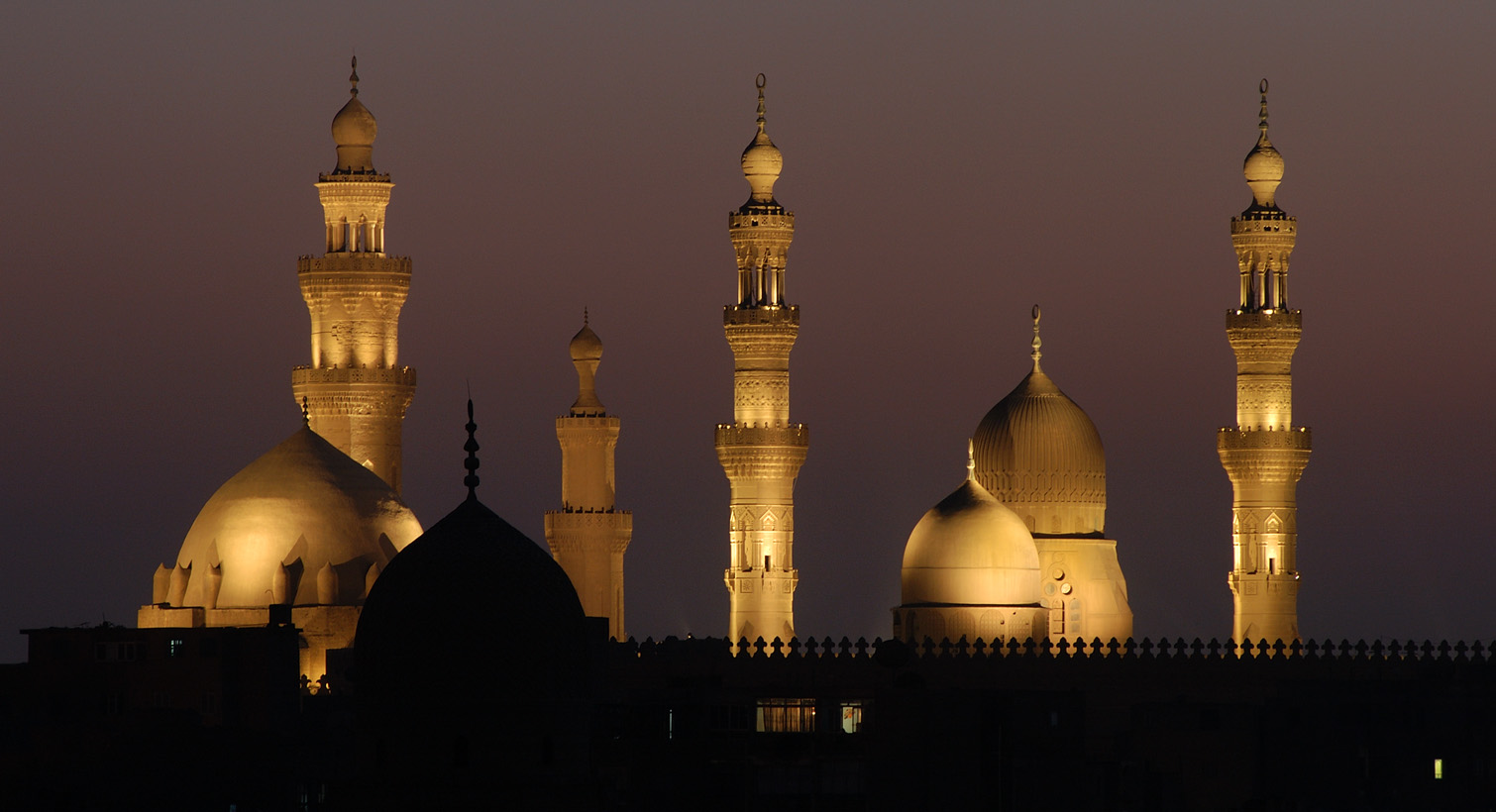The Mosque-Madrassa of Sultan Hassan is a massive Mamluk era mosque and madrassa located near the Citadel in Cairo. Its construction began 757 AH/1356 CE with work ending three years later "without even a single day of idleness". At the time of construction the mosque was considered remarkable for its fantastic size and innovative architectural components. Commissioned by a sultan of a short and relatively unimpressive profile, al-Maqrizi noted that within the mosque were several "wonders of construction". The mosque was, for example, designed to include schools for all four of the Sunni schools of thought: Shafi'i, Maliki, Hanafi and Hanbali.
Sultan Hasan's low profile seems inconsistent with the massive undertaking that was his mosque, but the mosque's grandeur makes sense given Sultan Hasan's dramatic life. Sultan Hasan ascended the throne at the age of 13 in 748 AH/1347 CE. When he reached maturity in 1350, he arrested the Emir Manjaq who controlled all of the state's affairs. Prior to that arrest, the emir was restricted to an allowance of just one hundred dirham per day. This pocket change was collected by servants for the Sultan. It's especially striking considering that during that time, the emir Shaykhu was estimated to have an income of 200,000 dirham per day. This deprivation may be viewed as a prompt for his later extravagance.
Upon taking over the reins, Sultan Hasan placed people of his own favor into positions of power. This happened at the expense of dignitaries currently in position; it upset many of them. Discontented Emirs arrested the Sultan in 1351, held him in jail for three years, and promoted his brother Salih Salih to the throne. Hasan spent his time in jail studying and his obituaries commented on his learning as a result.
He returned to power and again reshuffled the ruling establishment attempting to solidify power, but Sultan Hasan was assassinated by his commander in chief of the army, Yalbugha al-‘Umari, a Mamluk thought to be loyal. Because of the Sultan's extravagance in spending fortunes on women and other forms of favoritism, the commander rebelled against the Sultan. A contemporary Syrian historian, Ibn Kathir, backed this reputation. Ibn Kathir blamed the sultan for his greed and squandering of public funds. The lavish expenses noted coincide with the Sultan's extensive mosque. After his assassination, Sultan Hasan's body was hidden and never found; the mosque never served its purpose.
The mosque was built close to the Citadel, on the site of the Palace of Yalbugha al Yahawws. This was meant as a pleasing site for the Sultan to look down on from his palace in the Citadel.
During the medieval era, an open space connected the mosque and the Citadel. This proximity and the mosque's sturdiness gave the mosque a unique strategic significance. Ibn Ilyas reported that it was used by Mamluk rebels as a fort to attack the Citadel from. Al-Maqrizi, noted that "as soon as there occurred strife between the people the state, a number of amirs and others ascended to the top of the mosque and began to bombard the Citadel from there". For this reason, the Sultan Janbulat tried to demolish the mosque, but after three days of attempted demolition, he had little success and gave up. Al-Maqrizi noted that the Sultan Barquq demolished the stairs to the two minarets to make it less useful in attacks against the citadel.
The sheer size of the mosque set it apart. Al-Maqrizi noted that the height of the large iwan was superlative. It measured 65 cubits, five higher than another notably large mosque, the Iwan of Kusraw at Al-Mada'in in Iraq.
Several unique features about the mosque should also be noted. Al-Maqrizi noted that the great dome that was not equaled in Egypt, Syria, the Maghreb, or Yemen. Despite the thickness of the mausoleum walls, the dome was made of wood. The mosque's dome was of an uncommon shape, that of an egg. The positioning of the mausoleum between two minarets was quite novel. Four minarets were planned, but they were never completed. This was an exceptional number for a mosque. The design of the twin portal minarets was uncommon as was the gigantic size of the mosque. The mosque is the only instance of chinoiserie in Mamluk architecture. The setup of the mosque was novel as well. The mausoleum was placed directly behind the prayer hall. This might have been thought profane, but it was not at the time.














